In one of the workshops I led at Mathcamp 2008, we made this two-layer geodesic sphere.
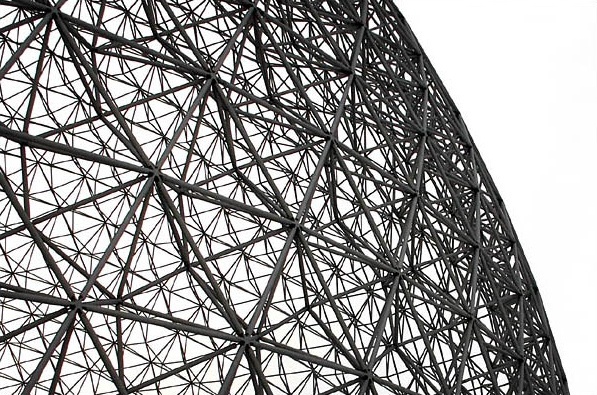
It is modeled after Fuller's Montreal's Expo67 dome. [Photo above by Sam Javanrouh]
The actual Montreal dome has frequency sixteen, while our model has frequency four.
A single-layer dome of high frequency buckles easily under local loads, but
thickening it to two layers makes it a truss, which adds greatly to its rigidity.
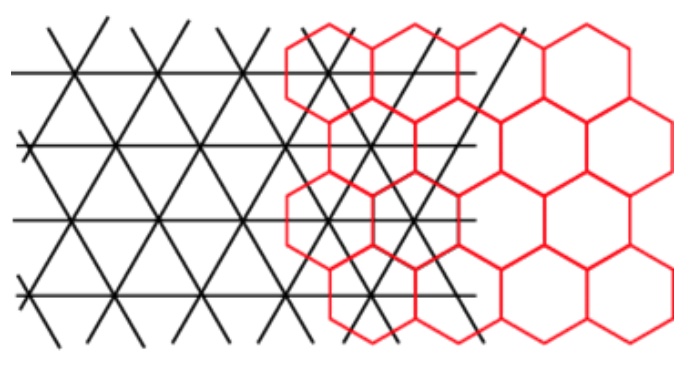
In this design, there are triangles for the outer layer and hexagons for the inner layer.
These two tessellations mesh well because {6,3} and {3,6} are dual to each other,
i.e., the vertices of each tessellation will lie in the centers of the faces of the other
tessellation and the edges of each cross the edges of the other at right angles.
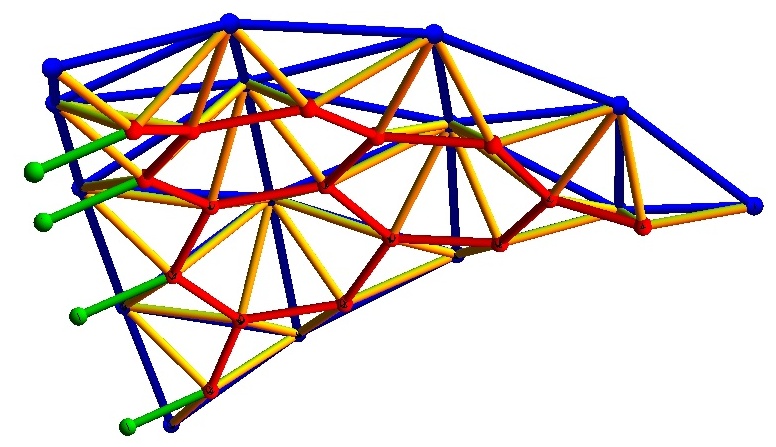
The two layers are connected by a middle layer of struts which join the vertices of each layer to nearby
vertices of the other layer. Notice the volumes created: a hexagonal pyramid above each hexagon,
a triangular pyramid (tetrahedron) below each triangle, and a tetrahedron for each pair of crossing edges.
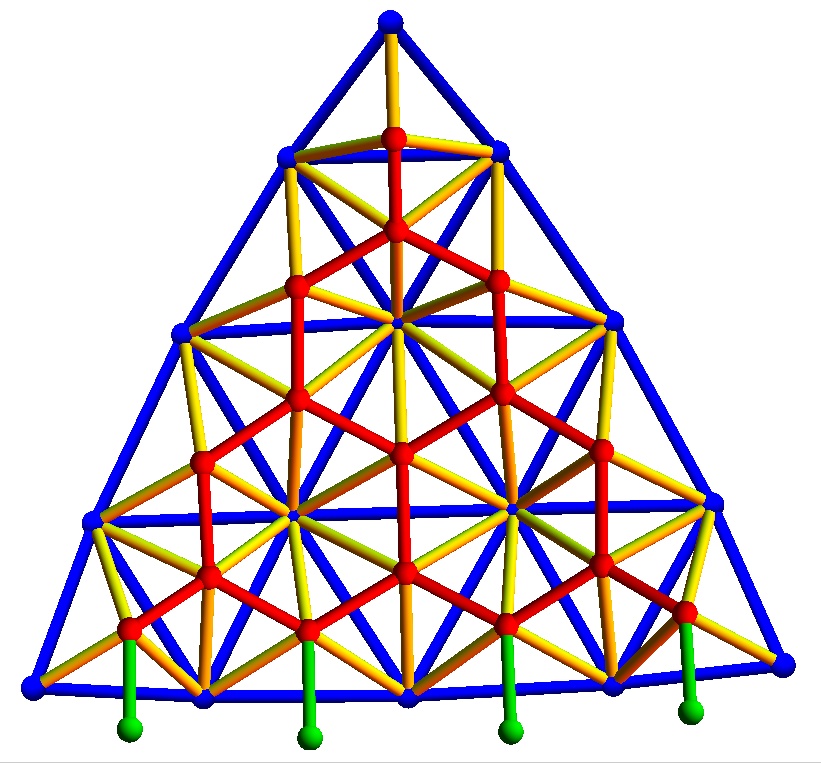
To make a dome, substitute a triangular chunk of the structure for each face of an icosahedron,
then project the vertices to two concentric spheres (one for the outer triangular layer and
another slightly smaller sphere for the hexagonal layer). One difficulty in such a design is
that after projecting, there are many strut lengths to calculate and keep track of.
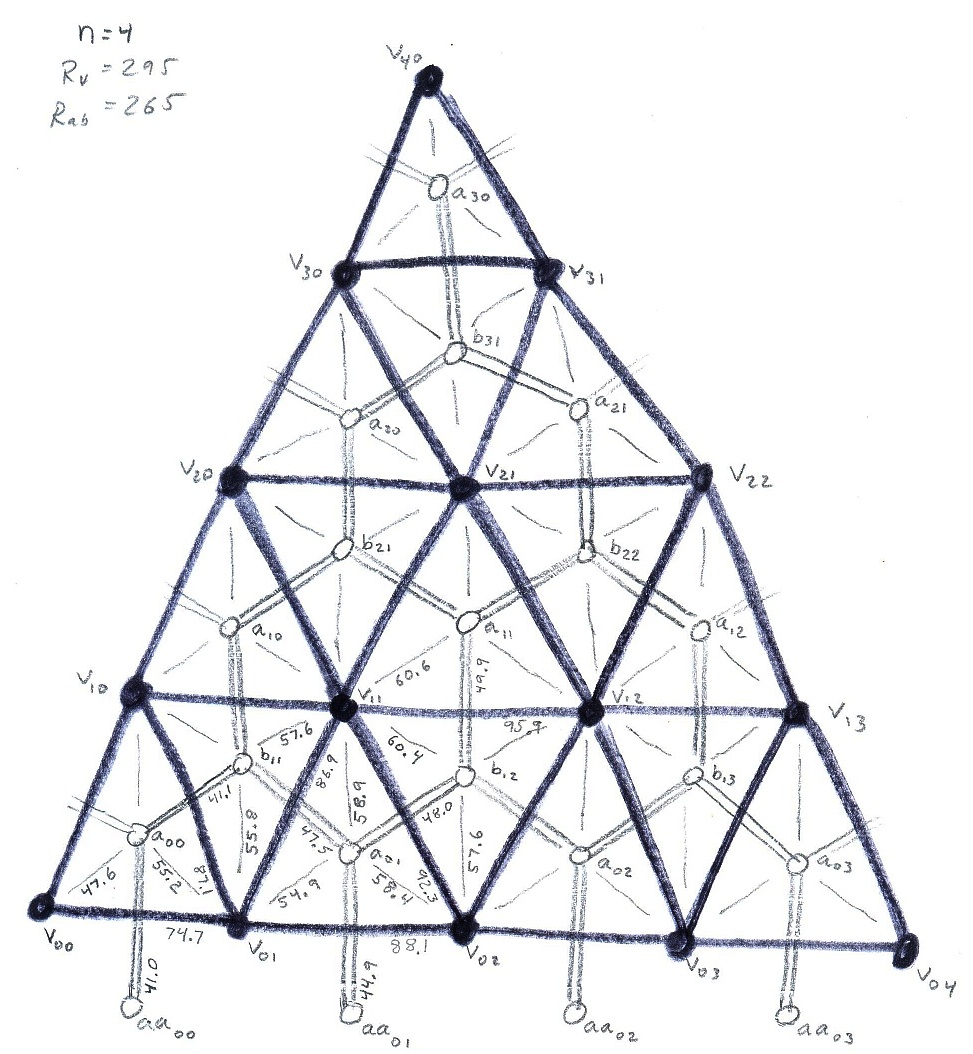
I wrote a Mathematica program to calculate all the strut lengths. All the different sizes are shown
The unlabeled edge lengths are the same as others already labeled, using symmetries of the triangle.
We built the model using TubeSpace parts, starting by assembling small units.
Thank you Jim Hausman for providing the parts.
We joined the small units into double-layer modules corresponding to a face of an icosahedron.
We started connecting the modules together to make chunks of an icosahedron.
There are many small details that must be attended to.
(It can't hurt to give it a quick acoustic check.)
Near the end, there were many small connections still to be made and adjusted.
With some tweaking it could be made more spherical, but we stopped as it was getting late.
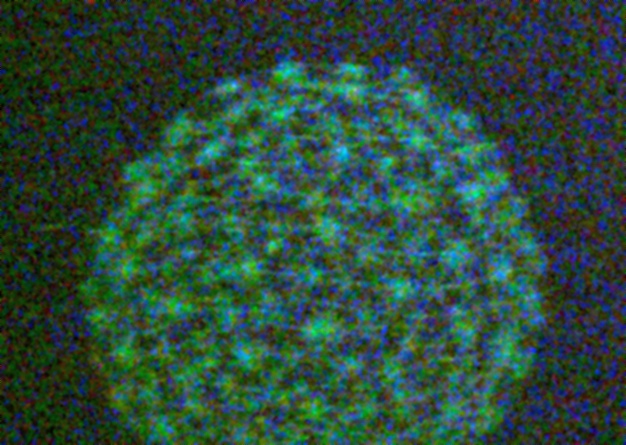
The material glows cooly in the dark, but it is hard to get a good photo of it.
Thank you Zhumeng for this last image.